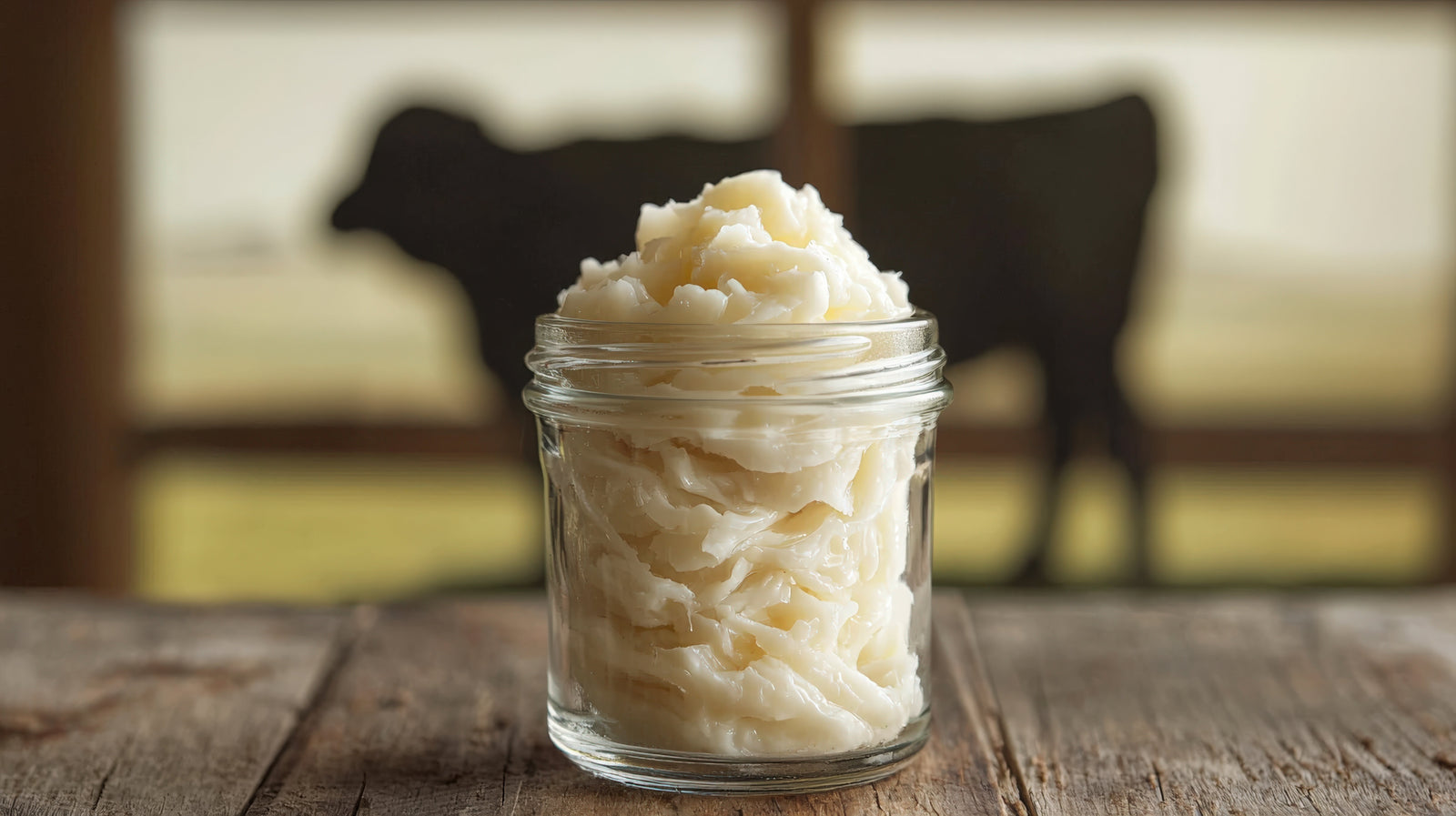In recent years, beef tallow has seen a major resurgence among home cooks, natural skincare advocates, and DIY enthusiasts alike. But what is beef tallow used for exactly, and why is it gaining so much attention? Once a cornerstone of traditional living, this rendered animal fat is being embraced once more for its versatility, sustainability, and impressive health benefits. Whether you're cooking, crafting skincare, or exploring natural home products, beef tallow is an ingredient worth rediscovering.
Understanding Beef Tallow: A Traditional Fat Making a Comeback
Beef tallow is rendered from the fat of a cow, typically from the suet found around the kidneys. When melted down and purified, it becomes a smooth, shelf-stable fat that has countless uses around the home and kitchen. While modern food trends pushed tallow aside in favor of seed oils and synthetic skincare, today's health-conscious consumers are bringing it back for its nutrient density and time-tested effectiveness. Known for its rich, savory aroma and smooth texture, tallow is both practical and deeply nourishing—inside and out.

Culinary Uses: Why Use Rendered Beef Fat Instead of Vegetable Or Olive Oil?
One of the most popular uses of beef tallow is in the kitchen. Cooking with beef tallow offers a flavor and texture profile that's hard to match. With a high smoke point of around 400°F, tallow is ideal for high-heat cooking methods such as deep frying, roasting, searing, and sautéing. Frying with tallow results in crispy textures and a satisfying umami flavor, while roasting vegetables with tallow gives them a rich, golden-brown finish and hearty taste.
Historically, beef tallow was even used by fast food giants. Today, many cooks are turning back to tallow for exactly that reason: it delivers superior flavor and performance in the kitchen.
When comparing tallow to modern vegetable oils, the advantages are significant. Tallow is more stable under heat, less prone to oxidation, and free of the chemical processing that many seed oils undergo.
Also packed with fat-soluble vitamins like A, D, E, and K, as well as B12, stearic acid, and CLA (conjugated linoleic acid)—all contribute to anti-inflammatory effects and better nutrient absorption. No wonder many are asking: why use beef tallow instead of vegetable oil? For many, it comes down to health, tradition, and taste.
Whether you’re searing a steak in tallow, making flaky pie crusts, or even baking pastries, beef tallow is a savory cooking fat that deserves a place in the modern kitchen.
Animal Fat Uses for Skincare: A Natural Remedy for Sensitive Skin
Beef tallow isn’t just for the kitchen, its benefits extend to skincare, especially for people with sensitive or dry skin. Tallow for skin has long been used as a natural moisturizer and healing balm because of its bio-compatibility with our own skin’s oils. Particularly effective as a remedy for eczema, chapped lips, and general dryness, it provides deep hydration without clogging pores.
Those following a grass-fed beef tallow skincare routine often report smoother, more balanced skin and fewer flare-ups. Rich in vitamins A, D, E, and K, as well as stearic acid and naturally occurring antioxidants, tallow helps restore the skin’s barrier and nourish it at a cellular level. These nutrients support collagen production, reduce inflammation, and promote overall skin health—making tallow a powerful alternative to synthetic creams and lotions.
Start with rendered tallow (preferably from grass-fed cows), add a few drops of your favorite essential oils, and whip the mixture until light and creamy. This blend works wonderfully as a daily facial moisturizer, body balm, or even a lip treatment.

DIY Uses: Homemade Tallow Products for Natural Living
Beyond skincare, beef tallow has a rich tradition in homemade products. Soap makers have long appreciated tallow for its ability to produce a firm, long-lasting bar with a luxurious lather. If you're looking for an easy beef tallow soap making recipe, all you need is lye, water, and tallow—no synthetic ingredients required.
Beef tallow can also be used for candle making, offering a clean-burning, slow-melting alternative to paraffin wax. In addition, many homesteaders use tallow as a leather conditioner, wood polish, or healing balm for cracked hands and heels. These applications make tallow a favorite for those who want to minimize waste and rely on multi-use ingredients.
DIY enthusiasts will appreciate the sustainability of making beef tallow products at home. Whether you're interested in learning how to make homemade tallow moisturizer or trying your hand at a tallow candle, this fat proves its value far beyond the frying pan.
How to Render and Source Beef Tallow
If you're ready to explore tallow in your own home, you can start by learning how to render beef tallow. The process involves slowly heating raw beef fat (suet) until the fat melts, then straining it to remove impurities.
Embracing the Many Tallow Benefits
From deep frying and baking to moisturizing dry skin and crafting natural soaps, tallow has proven to be a nutrient-dense, eco-friendly, and multi-functional staple. It fits seamlessly into both modern and ancestral lifestyles, offering a practical and holistic alternative to processed oils and synthetic products.
If you're seeking a healthy cooking fat, an effective dry skin remedy, or sustainable DIY inspiration, beef tallow has something to offer. This comprehensive tallow guide just scratches the surface of the many uses of beef fat—but it’s clear that this old-world ingredient is making a remarkable modern comeback.

